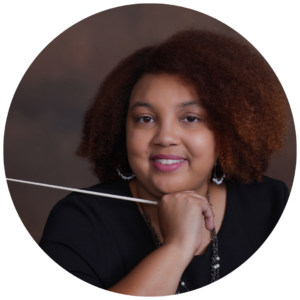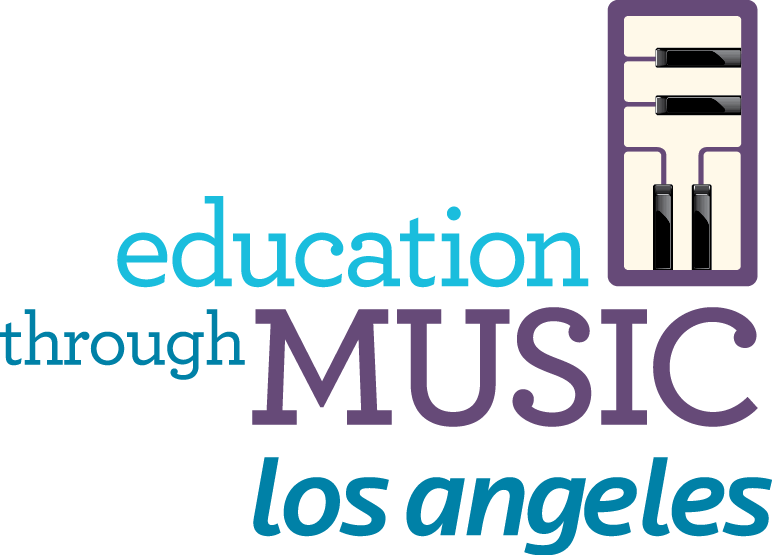Spotlight on Tiffiny, Instructional Supervisor Passionate about S.E.L
"We have to always continue to grow and stretch ourselves as educators to respond to our students and their needs."
February 15, 2022

Why do you teach music?
I teach music to further my personal mission of allowing students to gain a wider scope of the world, envision themselves as an integral part of the arts community, and to become social justice change agents in their communities through performing arts. I hope my students leave my music room as more than just good musicians. I want their lives changed, for them to be better people, and be critical thinkers who will change the world.
Can you share a story on how you’ve seen music impact a student(s)?
While working on our Hispanic Heritage Month unit, the students were learning about Celia Cruz. They were excited to learn about Afro-Cuban musicians, how to sing in Spanish, about salsa music, and how to salsa dance. I invited the students to go home and share with their families what they had learned. Many of the students returned saying their parents were not only excited that they were learning this in school, but shared their own memories of Celia and her music. This lesson was so impactful that it went beyond the music room to home and connected families through conversation; it provided a time to bond.
What is social-emotional learning (SEL), and how do you implement it with your students and the teachers you supervise?
Social-emotional learning is having the social intelligence to not only understand your emotions, but to be able to articulate them, regulate yourself, and appropriately respond to everyday life situations. I implement it with my students by always modeling what I expect to see from them. Everyone has tough days, and sometimes we can go with our initial gut reactions to those situations. SEL allows us to be mindful and really be intentional about how we process our emotions when interacting with one another. With the teachers I supervise, I am sure that I am vulnerable with them and also create an atmosphere of psychological safety for them. I want them to know that it’s okay to have a full range of emotions, and that sometimes in teaching we can go through many emotions in one day… even one class period!
What advice or resources would you give other music educators to encourage intentional diversity and inclusion in the classroom?
Form relationships with students and ask them about the way they do music. Many of our diverse students do not see themselves present in the music classroom. We have to always continue to grow and stretch ourselves as educators to respond to our students and their needs. If it seems like a student just isn’t connecting in music class, talk to them. Find out some ways they can contribute to the class culture. Every time students make a suggestion about the type of music they like, whether it’s video games, pop music, hip hop, I try to incorporate it within the next lesson. It’s so easy to swap out lesson materials and still apply the same learning objective. Also, seek to understand and apply with authenticity. It’s alright to bring the culture bearers into the music room, whether it’s the students, their families, community members, colleagues, or even other teachers. It’s a community effort, and I want students to know that everyone has a unique musical journey.
What is something you are passionate about when it comes to Black culture and the arts?
Everything! I love us! I’m proud to be Black and I feel that the culture, especially in the arts, is where we can be so versatile. It’s truly an area where we see so many innovators and influencers on a global scale. We can see the influences of Black culture worldwide. Whether Black American, African American, Caribbean, Afro-Latino, Afro-European, Afro-Asian, even Aboriginal, the influences are heard in the music we create, the dances we generate, the style of our clothes, and even in the way we display our African-American Vernacular English (AAVE). We are so very powerful beyond words. There’s a connection to the strength of our ancestors that is deeply rooted in how we internalize our experiences and how we express ourselves. It is a personal experience that we have, the honor of paying homage to those who came before us who never had the opportunity to excel as we have today.
What is the impact and importance for students of color to be represented in the teachers and mentors from whom they learn?
This is so incredibly important. There are cultural nuances that are carried down between generations. Even though all people of one culture do not have the same lived experiences, there is some level of connectivity. It also provides students an opportunity to see adults in the spaces they hope to occupy one day. As a Black educator, I find it is my responsibility to be transparent, honest, and advocate for students of color to have more equitable learning experiences than I once did. I think of what my life would’ve been like if I had more positive experiences with teachers and mentors who looked like me. Having the representation and seeing my own identity reflected allows the promise of seeing myself in an authentic way.





